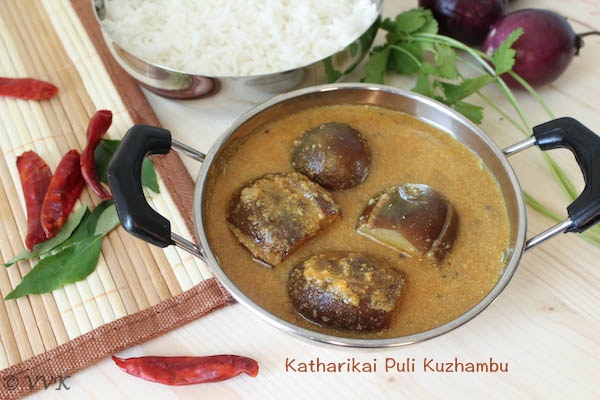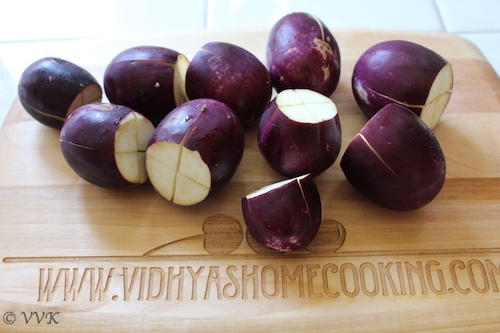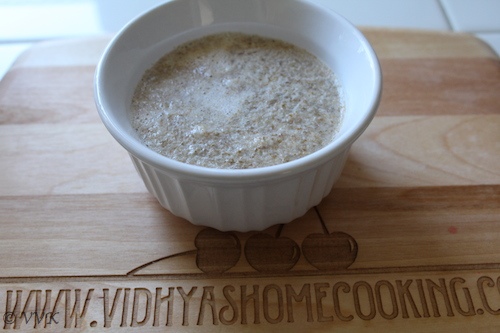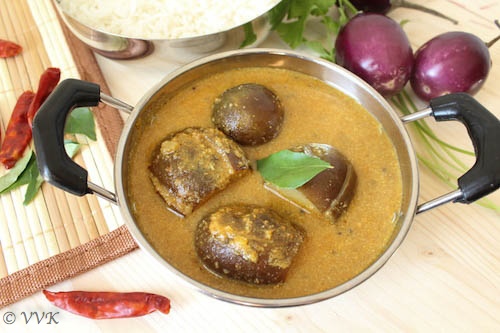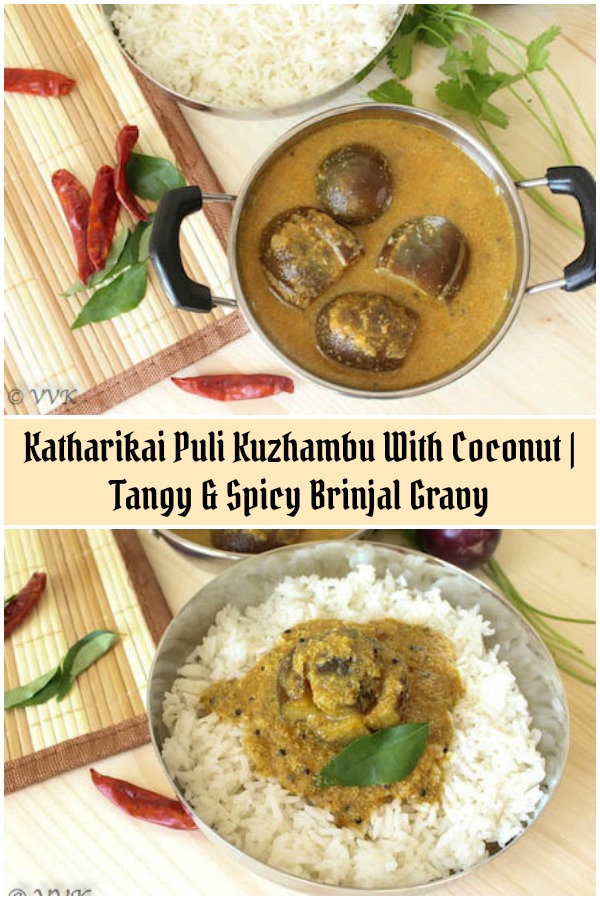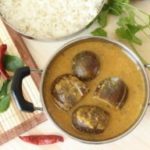Katharikai Puli Kuzhambu | the Brinjal gravy/sambar is a tasty and lip-smacking rice accompaniment prepared with tender brinjals. Here comes an authentic and traditional Tirunelveli style kuzhambu recipe prepared with tender brinjals with fresh ground coconut and shallots. Check out the detailed recipe with step-wise pictures below.
I know there are zillion variations to this kuzhambu and also this kuzhambu is one of the staples and common recipe in most of the households in Tamil Nadu. This recipe is from my friend who is from Tirunelveli. The fresh ground masala adds extra flavor to this yummy kuzhambu. When I visited my friend’s place, this was one of the rice accompaniments to the scrumptious meal they served. I don’t know if it was the brinjals or the coconut masala that made me fall in love with this gravy. I got the recipe right away and asked mom to prepare it too, and from that point, this variation became staple in our household. Brinjal, Eggplant, Aubergine and I bet it has other names too. One of the favorite veggie used worldwide. It is a low carb vegetable with sufficient magnesium. Why suddenly am I talking about brinjals? This week’s blogging marathon theme is “one veggie – 3 different recipes”. Of course, I went with my favorite veggie brinjals. I know I picked the same veggie last year too but what to do? I still have a lot of recipes to share. :-)
Katharikai Puli Kuzhambu With Coconut | Tangy & Spicy Brinjal Gravy
An authentic and traditional Tirunelveli style kuzhambu recipe prepared with tender brinjals with fresh ground coconut and shallots. Ingredients:
Small Tender Brinjals – 10 Oil – 3 tbsps Mustard Seeds – 2 tsps Hing – 1 tsp Fenugreek Seeds – 2 tsps Turmeric Powder – ½ tsp Red Chilly Powder – 2 tsps heaped Salt – 2.5 tsps Grated Coconut – ¼ cup Water to grind coconut – 2 tbsps Water for tamarind – 1 to 1.5 cups Tamarind Paste – 1 tbsp (If using tamarind, small lemon sized) Curry leaves – 1 strand To Grind Shallots – 5 Cumin Seeds – 1 tbsp Water – 3 to 4 tbsps
Prep Work:
Wash the brinjals and slit them as we do for ennai katharikai like below.
Peel the shallots and grind it along with cumin seeds with required water and set aside.
Grind the coconut coarsely with about 2 tbsps of water and set aside.
If using tamarind, soak in water and extract about 1 to 1.5 cups of juice. If using paste, mix 1 tbsp of tamarind paste in 1 cup of water and set aside.
Steps:
Heat the kadai and add oil. Once the oil is hot, add the mustard seeds, methi seeds, and hing. When the mustard seeds start to splutter, then add the curry leaves and let it fry for 30 seconds. Turn the heat to medium-low. Now add the ground shallots-cumin paste and turmeric powder and cook till the raw smell goes for about 7 to 8 minutes. Then add the brinjals and drizzle some water and cook till it becomes tender for about 10 minutes. Make sure you mix well so that the cumin and shallots masala gets coated nicely on the brinjals.
After about 10 minutes, add tamarind water, chilly powder, and salt. Mix it well and bring it to boil. When it starts to boil, then add the ground coconut paste and mix it well and let it simmer for about 2 to 3 minutes. After the first boil, turn off the heat.
That’s it. Yummy kuzhambu is ready. Serve hot with rice.
Notes:
The original recipe calls for about one heaped tbsp of chilly powder. But as we prefer less spicy, I used only two tsps. Adjust salt according to your preference. You can substitute brinjals with drumstick or lady’s finger. You don’t need to add any additional tomatoes or onions for this kuzhambu. But if you prefer, you can add them. But adjust the tamarind depending upon the tanginess of the tomatoes.
📖 Recipe
